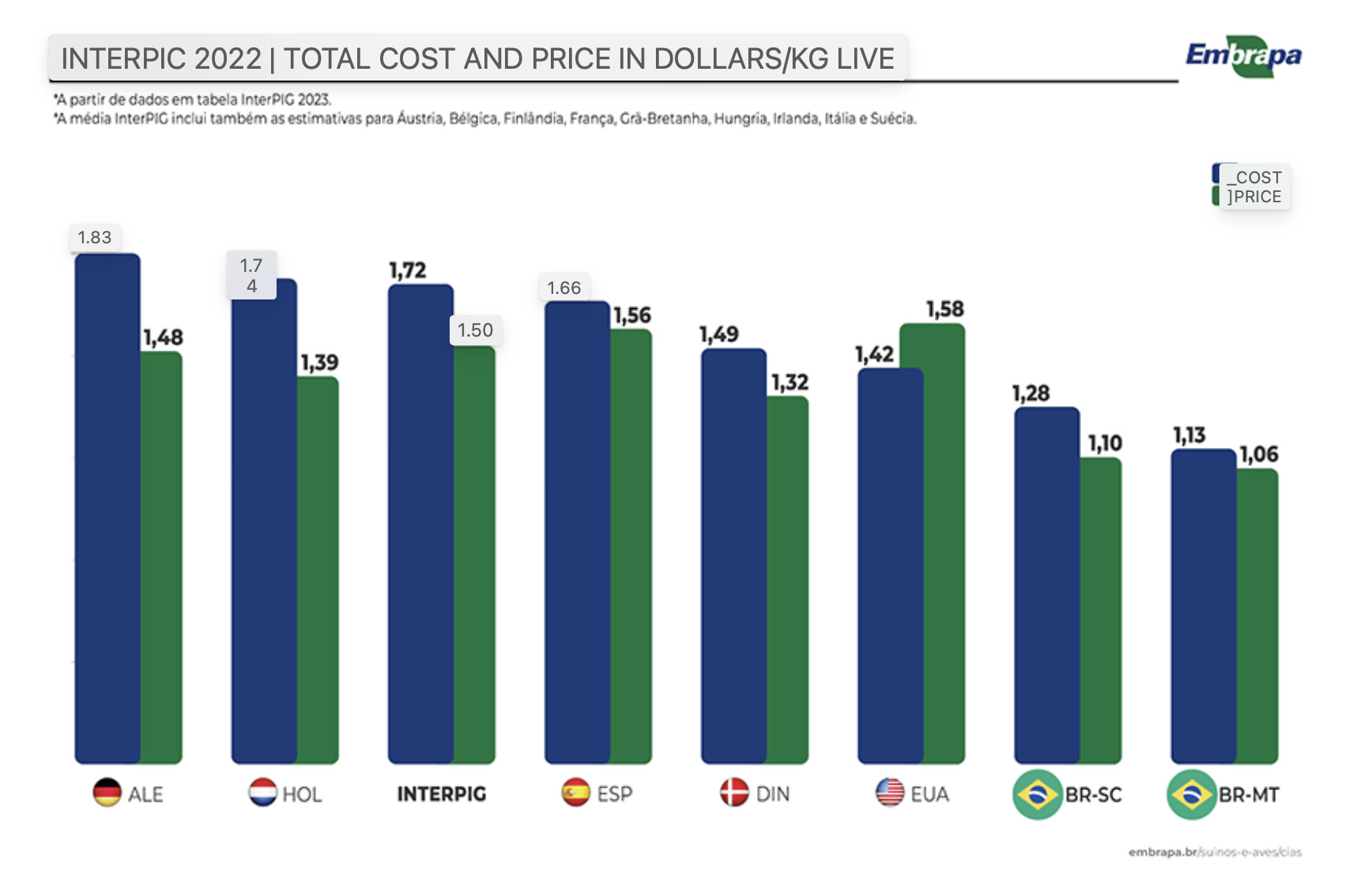Cost of pork production lowest in Brazil – Embrapa

Brazil maintains world leadership among 17 countries in the value of the cost of production in dollars per kilo of pig, according to figures presented by the Brazilian Agricultural Research Corporation (Embrapa).
The study includes data from the states of Mato Grosso and Santa Catarina. In Mato Grosso, the production cost in 2022 was US$1.13 per kilogram of pig live, while in Santa Catarina it was US$1.28.
Despite increases of 10% and 12% in the two states, respectively, compared to 2021, the values are still lower than in the United States (US$1.42 per kilo live), Denmark (US$1.49), Spain (US$1.66), the Netherlands (US$1.74) and Germany (US$1.83). The average of the countries that are part of the InterPIG network is US$1.72 per kilogram. Statistics for the average cost of production in China were not included.
The worldwide costs of pig production increased significantly in 2022. The data are from the Group for Comparison of Production Costs in Swine Farming (InterPIG network), which brings together institutions from 17 pork-producing countries, including Brazil, which is represented by Embrapa. The numbers were presented this year during the group meeting.
On the other hand, the lowest prices received per live kilo are also from Brazil, with US$1.06, in Mato Grosso, and US$1.10, in Santa Catarina, while the average, for example, in the United States is US$1.58 per live kilo. These values, in addition to the performance of Brazilian production in matrix productivity, slaughter weight, weight gain in finishing and feed conversion can be followed in infographics produced by Embrapa.

“The main objective of this disclosure is to bring information to the agents of the production chain in Brazil about the degree of competitiveness of its main competitors,” says the researcher in the area of socio-economics of Embrapa Suínos e Aves (SC) Marcelo Miele. He points out that all countries showed a significant increase in production costs in 2022 and that the prices received by the pig also increased, however, in most countries the variation was lower than the costs, generating losses in pig farming, with the United States being an exception.
The researcher explains that the generalized increase in production costs in 2022 occurred mainly due to the prices of corn and soybean meal. Animal feed inputs were impacted by both climatic and geopolitical events such as the war in Ukraine, which made fertilizers more expensive and reduced the global grain supply. “In addition, global inflation in prices (electricity, vaccines and medicines and construction), in the remuneration of labor and its impact on interest rates also stands out,” adds Miele.
Read also
Wheat in Southern Brazil Impacted by Dry Weather and Frosts
Oilseed Industry. Leaders and Strategies in the Times of a Great Change
Black Sea & Danube Region: Oilseed and Vegoil Markets Within Ongoing Transfor...
Serbia. The drought will cause extremely high losses for farmers this year
2023/24 Safrinha Corn in Brazil 91% Harvested
Write to us
Our manager will contact you soon



